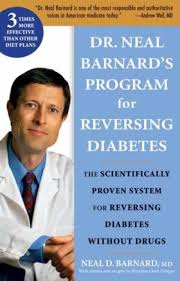
I originally wrote this book review about 3 years ago. Though published four years ago, this book has an Amazon.com sales rank of about 382 as of this writing. See the paragraph in bold for how feeding cows milk to children may predispose children toward developing Type 1 Diabetes.
I don’t have diabetes. I won this book as part of a package in a fund raising auction.
I found it to be very interesting.
One current theory for the genesis of food allergies is that “leaky guts”, porous intestines leak out proteins from our food before those proteins have been broken down into amino acids. These proteins then get out into the blood where the immune system is alerted to them, thus triggering an autoimmune response.
Infants, whose digestive systems are not fully matured, are predisposed to having leaky intestines. They are vulnerable to developing food allergies if they are fed highly allergenic foods too early ( dairy products, soy, wheat, citrus, meat etc ). The proteins leak into their blood stream and their immune systems are inadvertently trained to see these proteins as hazards.
Type 1 diabetes is believed to happen, in part, when the immune system mistakenly attacks and destroys the insulin producing cells of the pancreas ( pages 30 – 35 ). The book describes several studies of children predisposed to type 1 diabetes or children who were on their way to getting it. It turned out that these children’s immune systems were “on alert” to attacking proteins found in bovine milk. It has been discovered that portions of those bovine milk proteins were nearly biochemically identical to the children’s insulin producing cells.
Wow.
Dr. Barnard’s dietary program for type 2 diabetes has been tested in several studies in partnership with the National Institute Of Health. In a nutshell, he prescribes eating low fat ( only 20% of calories from fat, preferably 10% ), high fiber, low glycemic index valued, and vegan foods. That is, each bit of food that a recovering diabetic eats has all of these qualities.
The really interesting part is where the book explains why this works. Too much fat accumulating on the inside of cells causes the mitochondria in those cells to stop burning such fat, which leads to insulin resistance. Though a person’s pancreas might be kicking out enough insulin, the insulin no longer has any effect on the cells. The cells will not absorb glucose from the blood stream leading to toxic levels of sugar in the blood.
The diet described above has been proven to reduce the amount of fat within cells, restart the burning of this fat by the mitochonria, reverse insulin resistance, and lower blood sugar levels — without drugs.
Again, wow.
Weight control is an important part of treating diabetes and this book has a lot of interesting facts about losing weight from the studies of Dr. Barbara Rolls who wrote the book “Volumetrics”. Unlike the various quack popular diet book authors out there Dr. Rolls is a highly respected scientist who has been researching how to satisfy hunger with fewer calories.
One thing she learned is that for each 14 gram increase of fiber in a diet ( via food, not supplements ) people will eat until they are full, but they will feel full on 200 fewer calories.
200 fewer calories per day is enough to lose 20 pounds over the course of a year.
Her theory is that weight in the stomach triggers satiation.
Interestingly, her studies found that not any weight will set this response off. Having study participants drink a particular weight of water did nothing for triggering early satiation. However taking in the same weight composed of water and food ( stew ) did.
Dr. Rolls recommends eating foods that have natural “bulk” – a lot of water and a lot of fiber together naturally. To encourage weight loss she advises eating food that has the more weight per a particular amount of calories.
A neat trick offered by the book is to focus on eating foods that have an equal number of calories as grams of weight…or less.
Another simple weight loss trick offered by Dr. Barnard is to do a “quick fiber check” when your weight loss seems to be slowing down. He has a set value of points for servings of legumes, vegetables, fruit, and whole grains. You count the number of servings of each you have every day. If your points add up to less than 40 and you want more weight loss you eat more food from those groups of foods.
The book also gave a very clear introduction to the disease of diabetes in accessible, but not dumbed down language that I found fascinating.


